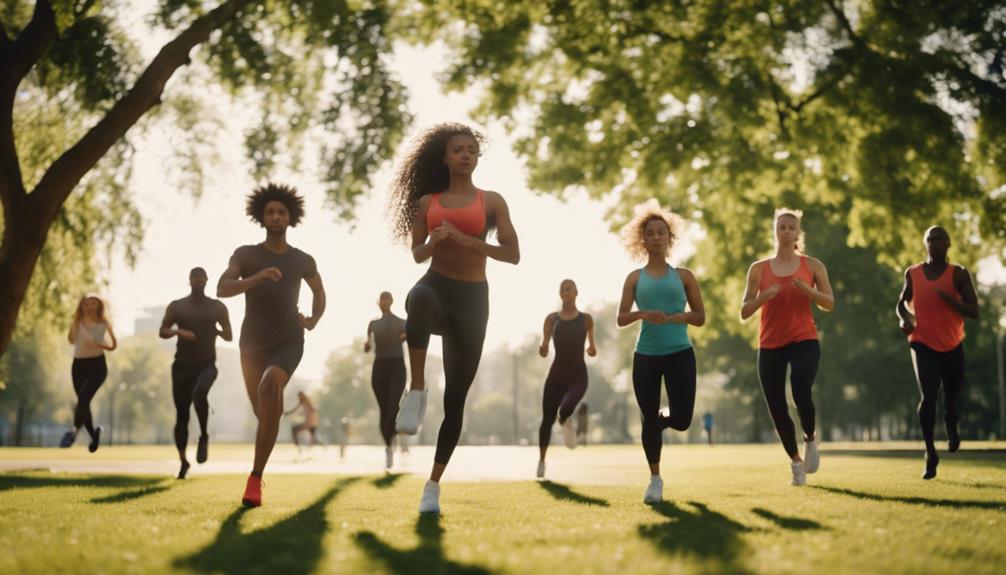
Exercise is often hailed as a miracle worker for both physical and mental health, but some may wonder if it comes with hidden downsides. One question that emerges among fitness enthusiasts is whether exercising can lead to yeast infections. Understanding the connection between physical activity and these pesky infections is key to maintaining your health while pursuing your fitness goals. In this article, we’ll break down the facts, explore how exercise interacts with your body’s environment, and provide tips on how to stay yeast infection-free during your workouts.
Can Exercise Really Trigger Yeast Infections?
Yes, exercise can potentially trigger yeast infections in some individuals, although it’s not a common outcome for everyone. The primary reason behind this is the physiological changes that occur in the body during and after physical activity. When you exercise, your body temperature rises, sweat increases, and the balance of bacteria and yeast in your body may shift, creating an environment conducive to yeast overgrowth.
That said, it’s important to note that not all workouts will result in a yeast infection. The risk varies widely among individuals, influenced by factors like personal hygiene, clothing choices, and overall body chemistry. For many, the benefits of exercise far outweigh this potential risk. Being informed about what can contribute to yeast infections can help you manage your workouts and maintain a healthy balance.
Understanding Yeast Infections: The Basics Explained
A yeast infection, or candidiasis, is caused by an overgrowth of the Candida fungus, which is naturally present in the body. This condition often manifests as discomfort, itching, and discharge, predominantly affecting women but also occurring in men. While typically associated with the vaginal area, yeast infections can also develop in other parts of the body, such as the mouth, skin, and digestive tract.
The Candida fungus thrives in warm, moist environments, which is why certain situations—like sweating during a workout—can create an ideal breeding ground. Understanding the nature of yeast infections is crucial for recognizing symptoms early and taking proactive measures to reduce your risk, especially if you’re frequently engaging in physical activities.
How Exercise Affects Your Body’s pH Balance
Exercise can influence your body’s pH levels, which may impact the growth of yeast. The human body has a natural pH balance, and even minor shifts can create conditions that favor yeast proliferation. Intense workouts can lead to lactic acid build-up, temporarily lowering your body’s pH, but once you cool down, it typically stabilizes again.
However, if your body remains in a slightly more acidic state due to consistent workouts and inadequate recovery, you might create an environment that encourages yeast growth. It’s essential to monitor your body’s reactions and ensure you’re not compromising your health while pushing your fitness limits.
The Role of Sweat in Yeast Infection Development
Sweat plays a dual role in your fitness journey. On one hand, it cools you down and helps regulate your body temperature, but on the other hand, it can also create a moist environment that yeast loves. When sweat accumulates in areas like the groin or underarms, it can lead to irritation and make it easier for yeast to thrive.
After a workout, it’s crucial to shower and change into dry clothing as soon as possible. Leaving damp clothes on can exacerbate the problem, allowing yeast to flourish in those warm, moist areas. Being proactive about your post-exercise routine can significantly reduce your risk of developing a yeast infection.
Is Your Workout Gear Contributing to Infections?
The type of workout clothing you wear can impact your likelihood of developing a yeast infection. Tight, non-breathable fabrics can trap heat and moisture, creating an ideal breeding ground for yeast. Materials like polyester and nylon are often less breathable than cotton, leading to a build-up of sweat and moisture in sensitive areas.
Opting for moisture-wicking and breathable fabrics can make a significant difference. Loose-fitting clothing allows for better air circulation, reducing the risk of developing infections. Being mindful about the materials you choose for your workouts is a simple yet effective way to help keep yeast infections at bay.
Signs You Might Have a Yeast Infection Post-Workout
If you experience symptoms like itching, burning, or unusual discharge after working out, you may have developed a yeast infection. Other signs can include swelling or redness in the affected area, discomfort during urination, or pain during sexual activity. It’s essential to listen to your body and pay attention to these symptoms, especially if they occur frequently after exercise.
While occasional irritation may not indicate an infection, persistent symptoms warrant a closer look. Knowing what to watch for can help you catch a yeast infection early and seek treatment before it becomes more uncomfortable.
Tips for Staying Yeast Infection-Free While Exercising
To keep yeast infections at bay during your workouts, start with good hygiene. Shower before and after exercising, and make sure to change out of sweaty clothes as soon as possible. Maintaining a clean workout environment is also crucial, so ensure your gym equipment is sanitized if you’re using public facilities.
Additionally, consider incorporating probiotics into your diet, as they can help balance the natural flora in your body. Foods like yogurt, sauerkraut, and kimchi can support your gut health and potentially reduce the risk of yeast infections. A little attention to these practices can make a big difference in your overall well-being.
Nutrition’s Impact on Yeast Infections and Workouts
What you eat can also play a role in your susceptibility to yeast infections. Some foods, particularly those high in sugar and refined carbohydrates, can feed Candida and promote its growth. If you find yourself prone to yeast infections, it might be wise to limit these foods in your diet, especially when ramping up your workout routine.
On the flip side, incorporating anti-fungal foods—like garlic, coconut oil, and apple cider vinegar—can support your body in fighting yeast. Staying hydrated is essential too, as proper hydration supports overall bodily functions and can help maintain a balanced internal environment. Ultimately, a well-rounded diet combined with your exercise regimen can contribute to better overall health.
When to See a Doctor: Yeast Infection Concerns
If you suspect that you have a yeast infection, especially if symptoms persist or worsen, it’s essential to consult with a healthcare professional. They can provide a proper diagnosis and recommend treatments ranging from over-the-counter antifungal medications to prescription options, depending on the severity of the infection.
Don’t ignore recurring symptoms or simple discomfort; addressing these concerns early can help prevent more significant health issues down the line. Being proactive about your health is crucial for maintaining an active lifestyle.
Maintaining a healthy lifestyle through exercise is immensely rewarding, but understanding the potential risks—like yeast infections—is vital for ensuring you stay at peak health. By following proper hygiene practices, choosing the right workout gear, and monitoring your body’s signals, you can enjoy your fitness journey without the added worry of infections. Remember, it’s all about balance, and being informed is your best defense for a healthy, active life.





